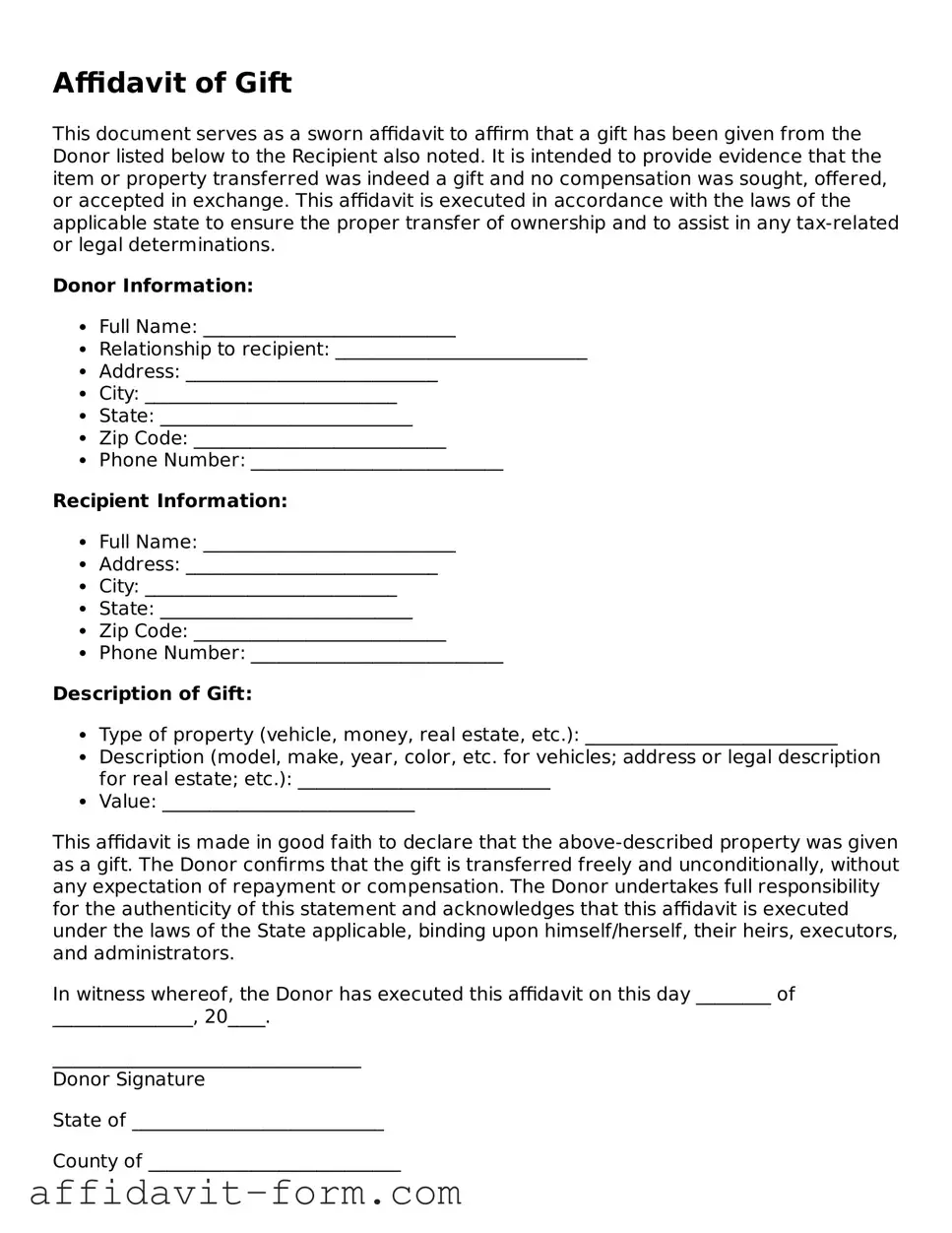Affidavit of Gift
This document serves as a sworn affidavit to affirm that a gift has been given from the Donor listed below to the Recipient also noted. It is intended to provide evidence that the item or property transferred was indeed a gift and no compensation was sought, offered, or accepted in exchange. This affidavit is executed in accordance with the laws of the applicable state to ensure the proper transfer of ownership and to assist in any tax-related or legal determinations.
Donor Information:
- Full Name: ___________________________
- Relationship to recipient: ___________________________
- Address: ___________________________
- City: ___________________________
- State: ___________________________
- Zip Code: ___________________________
- Phone Number: ___________________________
Recipient Information:
- Full Name: ___________________________
- Address: ___________________________
- City: ___________________________
- State: ___________________________
- Zip Code: ___________________________
- Phone Number: ___________________________
Description of Gift:
- Type of property (vehicle, money, real estate, etc.): ___________________________
- Description (model, make, year, color, etc. for vehicles; address or legal description for real estate; etc.): ___________________________
- Value: ___________________________
This affidavit is made in good faith to declare that the above-described property was given as a gift. The Donor confirms that the gift is transferred freely and unconditionally, without any expectation of repayment or compensation. The Donor undertakes full responsibility for the authenticity of this statement and acknowledges that this affidavit is executed under the laws of the State applicable, binding upon himself/herself, their heirs, executors, and administrators.
In witness whereof, the Donor has executed this affidavit on this day ________ of _______________, 20____.
_________________________________
Donor Signature
State of ___________________________
County of ___________________________
Subscribed and sworn to (or affirmed) before me on this _____ day of _______________, 20____, by ___________________________ (Donor’s name), proving to me through government-issued photo identification to be the person whose name is subscribed to the within instrument, and acknowledged that he/she executed the same.
_________________________________
Notary Public
My commission expires: _______________.
